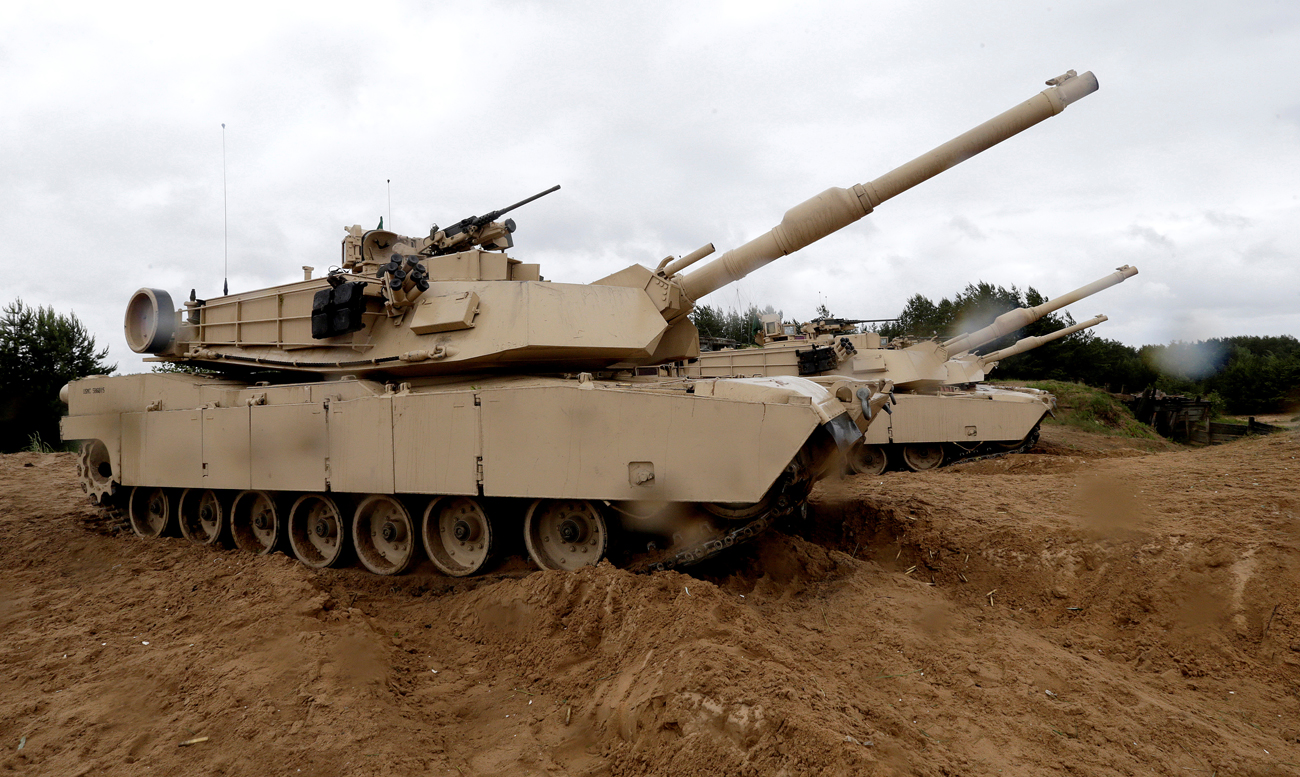
U.S. M1 Abrams tanks take part in the "Saber Strike" NATO military exercise in Adazi, Latvia.
ReutersThe first U.S. heavy armored brigade combat team will be dispatched to Europe in January 2017, Lt-Gen Ben Hodges, the U.S. Army Europe commander, has said in an interview with Defense News at the annual Association of the United States Army conference. The redeployment is part of a U.S. military build-up in the region to reassure allies and deter against an aggressive Russia, Hodges explained.
The 3rd Brigade of the 4th Division out of Fort Carson, Colorado, will start loading ships in the coming weeks.
It is expected to arrive in the port of Bremerhaven, Germany, in the middle of January, the general said. Before the journey across the ocean, the brigade will undergo a readiness test as to how fast it can unload the ships in the German port and get to western Poland.
The next heavy armored brigade combat team, due to be dispatched in September 2017, will likely sail into several European ports to test its ability to unload and assemble at another designated point, said Hodges. The general predicted that, given the winter weather, the 3rd Brigade will arrive at the training range near the Polish town of Drawsko Pomorskie in approximately three weeks’ time.
Upon arrival, the armored brigade will check its weapons and hardware, test communications and camouflaging, load ammunition and deploy to its areas of responsibility to prepare for combat action.
All the above will become part of the Atlantic Resolve exercise, the general explained. The drill is aimed to support U.S. allies in Europe and to deter Russia through a show of military might.
One battalion will head to the Baltic region, to show “resolve” in the north of the continent, said Hodges, while another battalion will deploy to Romania and Bulgaria, to demonstrate capability in the south.
The bulk of the combat team will remain in Poland, where there are acceptable conditions in place for accommodating the troops, he said.
Viktor Murakhovsky, editor-in-chief of the Arsenal Otechestva (Arsenal of the Fatherland) magazine, told Gazeta.ru that since the U.S. Armed Forces do not have permanent divisions, “it is hard to say exactly what these brigades will look like in terms of their numbers and combat capability.”
In his opinion, without the relevant reinforcements, U.S. Army battalions in Eastern Europe are unlikely to present a threatening force and are more of a political step than an operational-strategic one.
“Without a doubt, this is being done to boost the morale of the United States’ East European allies,” said Murakhovsky.
It is expected that U.S. units and formations will take part in NATO’s annual maneuvers on the European continent. However, the alliance’s next drill in Poland (“Anakonda”) will be held only in 2018. U.S. armored brigade units will take part in the Saber Guardian exercise in Bulgaria and Romania in July 2017. The maneuvers will involve some 30,000 personnel from more than 20 NATO member states.
“It is absolutely clear that the deployment of U.S. military units to Europe is a tranquilizer of sorts for the East Europeans, who have recently been extremely agitated by a hypothetical military threat from Russia,” said Viktor Khramchikhin, deputy head of the Moscow-based Institute of Political and Military Analysis.
There is no way that several battalions could guarantee reliable defense of NATO’s eastern flank but “it is soothing psychologically,” he said.
“New NATO member states are particularly heartened by the fact that in the event of a war, U.S. soldiers may find themselves on the line and will thus be inevitably drawn into military action,” said Khramchikhin.
First published in Russian by Gazeta.ru
All rights reserved by Rossiyskaya Gazeta.
Subscribe
to our newsletter!
Get the week's best stories straight to your inbox